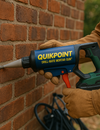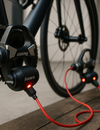
There’s something about sitting in a car with the right audio setup that feels immersive—where every note, bass thump, and vocal line hits cleanly and crisply. If you’re serious about sound beyond stock speakers, one of the most underrated tools in your arsenal is a high-quality electronic crossover. And among the options out there, the Clarion MCD360 3-Way Electronic Crossover stands out as a smart, precision tool for tuning your system exactly the way you want it.
In this guide, we’ll walk through what the MCD360 is, why even experienced installers rely on it, how to use it to get better sound, and what you need to know before adding one to your system.
Why You Need an Electronic Crossover
Before we dig into features, let’s set the stage: what is an electronic crossover, and why does it matter?
Your car’s speaker system typically includes multiple drivers—tweeters, midranges, and subwoofers—that each have strengths and limitations. Without a crossover, those drivers could get conflicting or overlapping frequencies, leading to muddied sound, distortion, or even damage.
An electronic crossover splits the frequency spectrum and sends each band (treble, mids, bass) only to the driver best suited for it. That results in:
-
Cleaner sound with less distortion
-
Better clarity and separation between instruments and vocals
-
More efficient amplifier use (you’re not wasting power on frequencies drivers can’t handle)
-
Protection for speakers by preventing them from trying to play frequencies they can't reproduce well
In short: an electronic crossover helps turn a collection of speakers into a balanced, high-fidelity system.
Introducing the Clarion MCD360
The Clarion MCD360 is a flexible, feature-rich 3-way electronic crossover designed for enthusiasts and installers who want serious control. While many crossovers offer only 2-way separation (high/low), this model can manage front, rear, and subwoofer channels, giving you a full system tuning solution.
Key features you’ll appreciate:
-
6 RCA outputs (Front / Rear / Sub) — giving you isolated control across driver zones
-
Continuously variable crossovers (32 Hz to 8 kHz) for front and rear channels, with a high-pass slope of 18 dB per octave
-
Adjustable sub crossover (45 Hz to 250 Hz) plus a built-in bass boost feature
-
Gold-plated, isolated RCA terminals minimizing signal loss and interference
-
Remote subwoofer level knob so you can dial the bass from the driver’s seat
-
High/Low input switching so it works with a variety of head units or signal sources
-
Isolated circuits & protection features to preserve signal purity
In short: Clarion built this crossover for serious installers who want more tuning control, without compromising usability.
Real-World Advantage: Why Installers Choose MCD360
Think of tuning your car audio like mixing a band. You need precise control over drums, guitars, vocals, bass, so nothing bleeds into something else. That’s what the MCD360 gives you—but in your car.
Here are a few real advantages:
-
Fine-tuned soundstage: You can use the crossover to shape how the system “feels” in your cabin—more punch in the mids, gentle roll-off in highs, etc.
-
Subwoofer integration: Use the adjustable sub crossover and bass boost to seamlessly integrate your sub with the rest of your system.
-
Multiple input sources: Because it supports high/low-level inputs, you can adapt it to OEM systems or aftermarket head units.
-
Reduced distortion and clipping: By filtering out frequencies that a driver can’t handle, the MCD360 helps you push your system harder without unhappy artifacts.
-
Component flexibility: Want to upgrade your fronts or rears later? The crossover will adapt—no need to replace your tuning hardware.
How to Use the MCD360 in Your System
If you’re ready to put one to work, here’s a workflow to get you started:
Mount the MCD360- Find a secure location in your trunk or behind your dash. Keep the RCA runs short and shielded from power wiring to avoid noise.
Connect Inputs- Use high- or low-level inputs depending on your source. Ensure your signal levels are clean; avoid clipping before they hit the crossover.
Set Output Routing- Send front, rear, and subwoofer outputs to their respective amplifiers or outputs.
Start with Default Frequencies- Set your front and rear crossovers to a midpoint (e.g., ~3–4 kHz). Set sub crossover somewhere in the 80–120 Hz range to start. Keep bass boost initially off
Tune by Ear & Meter- Use pink noise or test tones with an SPL meter. Check how transitions sound between drivers; adjust crossover points and slopes until your transitions are smooth and coherent.
Refine Bass with the Remote Knob- Drive around your usual listening territory and fine-tune sub volume to balance power and comfort.
Listen Musically- Play your favorite tracks. If vocals sound smeared, back off crossover settings; if bass is muddy, adjust the low-end crossover or gain.
Document Your Settings- Write down final crossover points and gains. If you ever need to reset or tweak later, you’ll thank yourself.
Common Mistakes & How to Avoid Them
Even experienced installers stumble—here are a few pitfalls to watch out for:
-
Too-aggressive crossover points: Pushing highs too low or subs too high without the right gain staging can cause gaps or overlaps in the frequency spectrum.
-
Routing mistakes: Accidentally sending the same frequencies to sub + mid can overload your system.
-
Ignoring phase: If your sub is out-of-phase with the rest of your system, bass can cancel out. Use the crossover’s phase control or reverse wiring to correct it.
-
Poor wiring practices: Ground loops, long unshielded runs, and shared paths with power wires can introduce hum or noise.
Comparing the MCD360: Alternatives & When to Level Up
You’ll find 2-way crossovers, digital signal processors (DSPs), and more advanced units on the market. Here’s where the MCD360 fits:
-
Vs 2-way crossovers: The MCD360 gives you full three-channel control—ideal for systems with front, rear, and sub setups.
-
Vs DSP units: DSPs add parametric EQ, time alignment, auto calibration, etc. But they’re more expensive and complex. The MCD360 gives you a simpler, analog solution for hands-on control.
-
Upgrade path: If you eventually add equalization, delay, or auto-tuning features, the MCD360 can act as a trusted base crossover in a more advanced setup.
Final Thoughts: Is the Clarion MCD360 Right for You?
If you’re building a multi-channel car audio system and care about crisp, balanced sound, the Clarion MCD360 3-Way Electronic Crossover delivers serious value:
-
More control over your frequency splits
-
Cleaner transitions between drivers
-
Flexibility to work with different amplifiers and signal levels
-
An analog, reliable backbone to your system
It may take a little tuning to unlock its full potential—so don’t expect perfect results right out of the box—but for audio enthusiasts and experienced installers, its control and precision make it a strong pick in the crossover space.




